
How Air Compressors Aid in Reducing Factory Noise Pollution
December 25, 2024
The Benefits of Installing Variable-Speed Drive Compressors
January 8, 2025Top Ten Compressed Air Fixes That Power Sustainable Manufacturing Practices
Kaishan USA | January 1, 2025 | Uncategorized
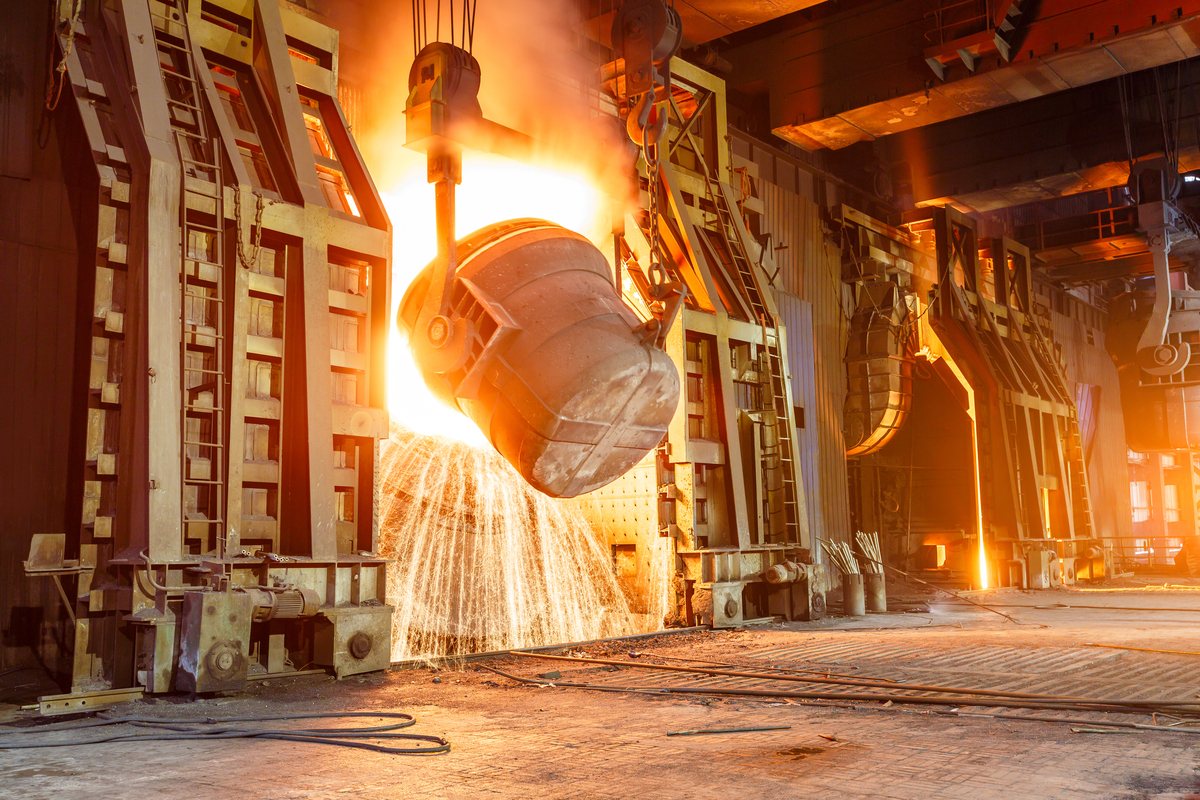
Progressive Foundry saved $23,000 a year by purchasing two Kaishan KRSP2 premium rotary screw air compressors, a 250-HP and a 350-HP, the latter equipped with a variable-speed drive. To find out how the company achieved industrial energy efficiency by adopting a comprehensive compressed air strategy, read the case study.
Compressed air is usually not the first thing that comes to a plant manager’s mind when asked to improve industrial energy efficiency by implementing sustainable manufacturing practices.
That’s understandable. Compressed air is not the most efficient use of energy. But it is essential in almost all factories, driving sensitive pneumatics. And supplying clean power in settings that aren’t appropriate (or safe) for electricity, gas or hydraulics.
But a facility manager who overlooks the energy-saving potential in compressed air is missing a significant opportunity.
First, the largest motors in most plants are the ones that drive your air compressors. Second, as a result, compressed air is one of the largest consumers of energy in your plant. That’s why compressed air is a logical target place to begin your efforts to improve industrial energy efficiency. For more information on the energy-saving potential in compressed air systems, see our blog post, “Want To Boost Your Plant’s Energy Efficiency? Start With Your Compressed Air System.”
To help you get started, we’ve compiled a list of measures—many of them quick fixes—that enable most plants to boost compressed air energy efficiency.
Admittedly, the lowest of the low-hanging fruit is finding and repairing leaks.
1. Compressed Air Leak Detection
Compressed air leak detection is one of the first steps you can take to build compressed air energy efficiency. Typically, compressed air systems lose 30-50% of their volume to compressed air leaks. And the total runs as high as 80% for poorly maintained systems.
Fortunately, some leaks are easy to find because they emit a notorious, hard-to-ignore hissing sound. Unfortunately, however, 80% of leaks don’t make any sound at all.
You can locate many of those inaudible leaks with handheld leak detectors. However, the most effective tools for compressed air leak detection are ultrasonic leak detection devices, which screen out signals from end-use tools or other devices that handheld tools often pick up. (For more information, visit our recent blog post, “Eight Causes of Compressed Air Leaks and How to Find Them.”)
Developing a great maintenance program is another obvious way to boost compressed air energy efficiency.
2. Regular Maintenance
Research shows that a proactive maintenance strategy can reduce maintenance costs by as much as 70%.
A key element of maintenance, of course, is identifying and fixing leaks, as mentioned above.
Unfortunately, most in-house air compressor maintenance teams do not have the skills or equipment to implement advanced technologies, such as ultrasonic leak detection.
So, getting sustainable, energy-efficient performance from an air compressor requires that you take maintenance seriously and build a relationship with an air compressor professional who can help you establish a regular maintenance program.
For more detail, read our post, “Ten Need-To-Know Rotary Screw Air Compressor Maintenance Tips.” Or download our white paper, “Air Compressor Maintenance: Ultimate Guide and Checklist.”
But not all compressors are the same. So, let’s talk about how you can build sustainability and compressed air energy efficiency from the outset—by choosing the right compressor for your application.
3. Selecting the Right Compressor
There are three main types of compressors used in most industrial plants today:
- Centrifugal compressors, which are most efficient in applications that need large amounts of flow but not extremely high pressures.
- Reciprocal compressors, which are generally the most cost-effective choice for smaller applications.
- Rotary screw compressors, which are used in most industrial and commercial facilities today because of their efficiency, long life and low cost of ownership.
For more on the pros and cons of different compressor types, read our blog post, “Which Type of Air Compressor Is Best for Your Application?” And for the specific advantages of rotary screw air compressors, see “The Top 20 Benefits of Rotary Screw Compressors for Industrial Use.”
Two-stage compressors are one way to make rotary screw air compressors even more energy-efficient and sustainable.
4. Two-Stage Compressors
A two-stage air compressor generates up to 15 to 20% more flow than a single-stage compressor of the same horsepower. Your payback on the additional cost may be less than two to three years on energy costs alone.
Here’s why: a single-stage compressor like Kaishan’s KRSP premium rotary screw air compressor generates a compression ratio of 7.8 to 1 to create 100 PSIG of pressure.
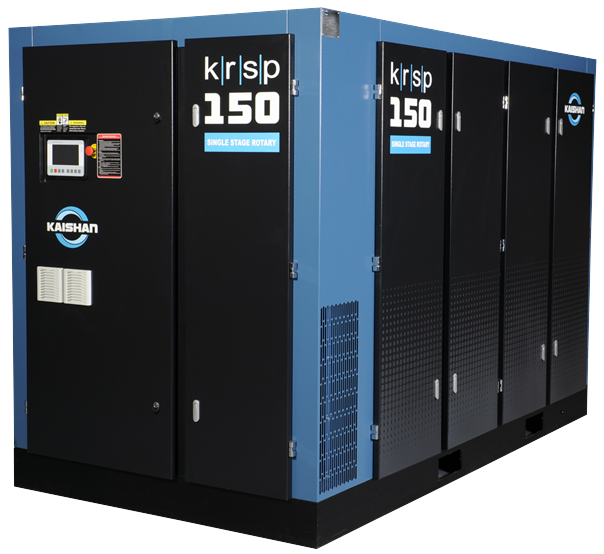
Kaishan’s KRSP premium rotary screw air compressors are among the most cost-effective and efficient options on the market.
On the other hand, a two-stage air compressor, such as our KRSP2 premium rotary screw air compressor, splits the workload into two separate stages—a first stage of 2.8 to 1, followed by a second stage of 2.8 to 1. Plus, before the second stage, the air passes through an interstage cooling step, removing some of the heat of compression and building efficiency.
So, while the KRSP single-stage rotary screw air compressor is one of the most cost-effective compressors on the market, improved efficiency enables the KRSP2 to generate even more compressed air per kW of power.
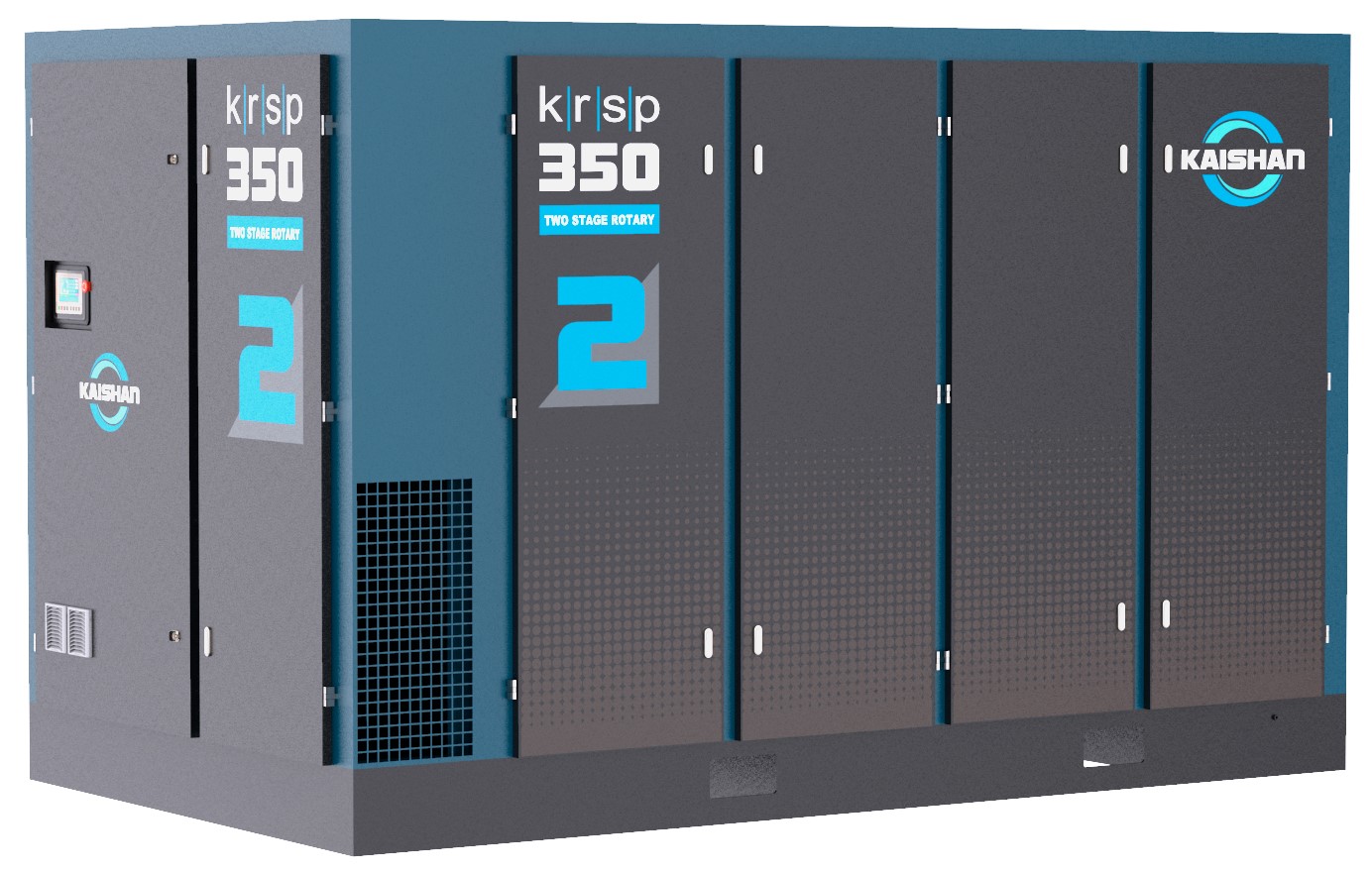
Kaishan’s KRSP2 two-stage rotary screw air compressor is one of the most energy-efficient machines on the market.
In addition, using two stages results in less mechanical stress and lowers the temperatures in each stage. By splitting the work, it thus reduces wear and tear and extends the life of components. That means less equipment waste to junk at the unit’s lifetime, another sustainability bonus.
And, because a two-stage compressor generates 15 to 20% of additional compressed air flow, you sometimes can use a model with a lower horsepower. For example, the performance advantage may be significant enough that you can replace a 300-HP single-stage compressor with a 250-HP two-stage KRSP2.
That brings up the issue of sizing, which is crucial to the long-term success of your compressed air system.
5. Accurate Sizing
Sizing is probably the most critical decision you’ll make about compressors, perhaps even more crucial than the type or even the brand. Why? Because the most severe problems almost always start with mistakes in sizing or application.
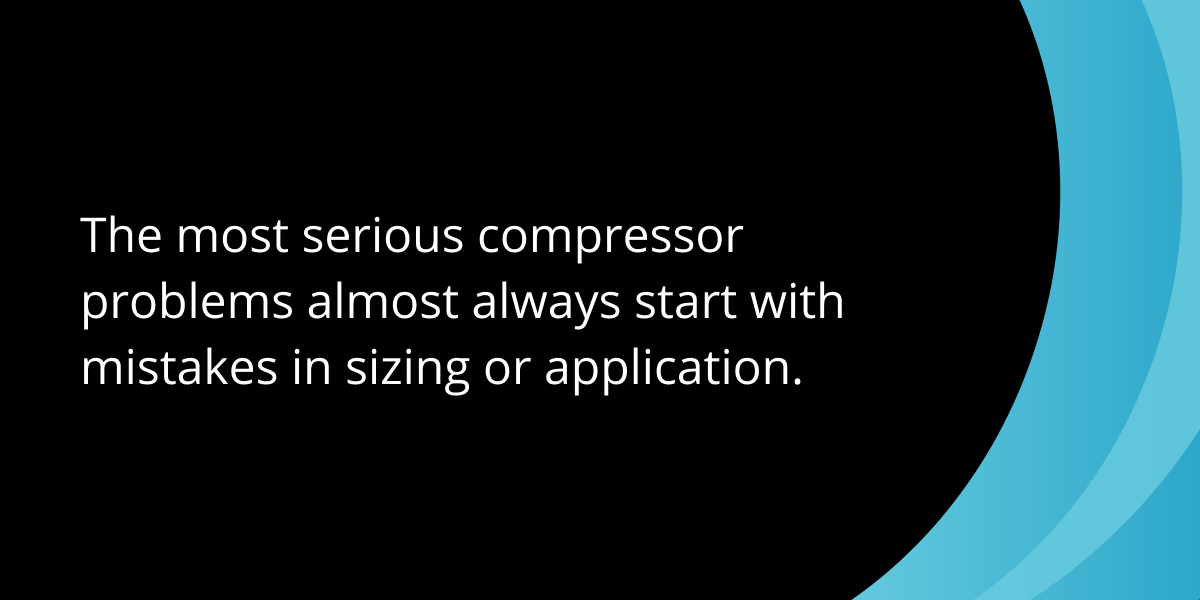
Over the years, we’ve seen far too many facilities oversize their compressors. They want to buy a compressor with “room to grow” or plan for future expansion. That’s a serious mistake that can lead to problems right from the get-go.
Here’s why: It may seem counter-intuitive, but purchasing “too much” compressor is as bad as buying “not enough.”
Oversizing your compressor will build in inefficiency right from the start. Worse yet, your new compressor could begin starting and stopping too often, leading to rapid cycling. That, in turn, requires more frequent maintenance and can lead to oil carryover and overheating. Long term, it increases wear and tear on critical internal parts and shortens a compressor’s lifespan. It’s something you want to avoid.
For more on the ins and outs of sizing, read our post, “Everything You Need To Know About Sizing Industrial Air Compressors for Manufacturing.” Or download our white paper, “Demystifying Air Compressor Sizing.”
There’s a temptation to believe that you can overcome most of those sizing issues by buying a compressor with a variable-speed drive. That may be true. But it may not be.
6. Variable-Speed Drive Compressors
The application of VSD technology to rotary screw air compressors has enabled many companies to save significant amounts of energy.
VSD technology is almost tailor-made for rotary screw air compressors, enabling them to operate more efficiently at part-load conditions.
And energy savings are not the only benefit. VSD compressors can earn rebates, allow soft starts and offer better control of your compressed air system. They are also an energy-efficient way to address rapid cycling.
But they are not for everyone. They are not a good choice at the extremes. At low usage levels, a VSD-equipped compressor could run too cold and build up moisture. Ultimately, that will ruin the machine.
At high levels of usage, a VSD compressor will be less efficient, because the drive itself incurs some losses.
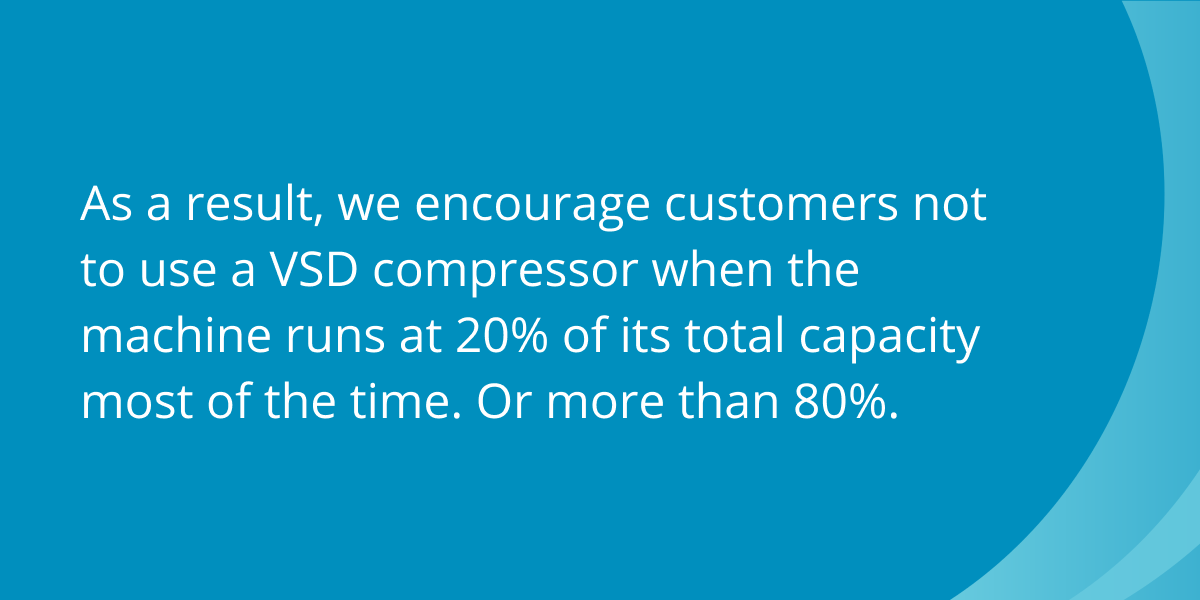
For more on the pros and cons of VSDs, see our blog post, “How Variable-Speed Drive Rotary Screw Air Compressors Save You Money."
If they’re appropriate for your application, advanced technologies like VSDs may provide many benefits. They may be a powerful incentive to upgrade your unit.
7. Upgrading Your Compressor
If your compressor is old, you can achieve significant savings by upgrading. Especially if it is nearing the end of its rated service life and you’re looking at a costly repair—requiring a new airend, VSD or motor, for instance.
After all, equipment manufacturers are constantly working to improve the efficiency of their products. So, the older your air compressor, the more energy savings you will get from a replacement. The energy savings alone can often tip the scale in favor of a new unit.
Remember, electricity makes up 76% of a compressor’s total cost of ownership, according to the U.S. Department of Energy. Meanwhile, the initial expense to acquire and install the equipment is only 12%.
For more information, read our blog post, “Signs Your Air Compressor Needs Repair or Replacement.”
Changing how you configure your compressed air system is one way to have the best of all worlds—easier maintenance and long-term reliability.
8. Compressed Air System Design
We often encourage customers to adopt a compressed air system design involving base, trim and backup units:
- A base load compressor meets your system’s minimum compressed air load.
- A trim compressor handles fluctuations in demand above the base unit.
- A backup compressor is on standby if a base or trim unit goes offline.
A three-compressor approach virtually eliminates unplanned downtime, simplifies maintenance and reduces electricity usage. For more on compressed air system design using a three-compressor configuration, read our blog post, “How Energy-Efficient Air Compressors Can Reduce Your Carbon Footprint.”
In addition, a three-compressor configuration helps with the next issue, avoiding the need to rent diesel units when a compressor goes down.
9. Avoiding Diesel Rentals
Plants without backup units generally rent portable diesel units when a main compressor breaks down.
That’s harmful to the environment. It produces emissions, and the air is of lower quality—most diesel portables do not include an aftercooler as standard equipment, so they send wet air to the dryer, making it work harder (and potentially flooding it). Plus, a diesel costs two to four times more to operate.
Then there are the maintenance and operating costs: a portable diesel compressor will need oil and filters every 250 hours. A 24/7 operation would need to perform maintenance every ten days. Plus, you must supply the unit with diesel fuel every 12 hours.
It's much better to have a system with backup capability. But that requires planning and usually requires the help of an air compressor professional who will want to start with an air audit.
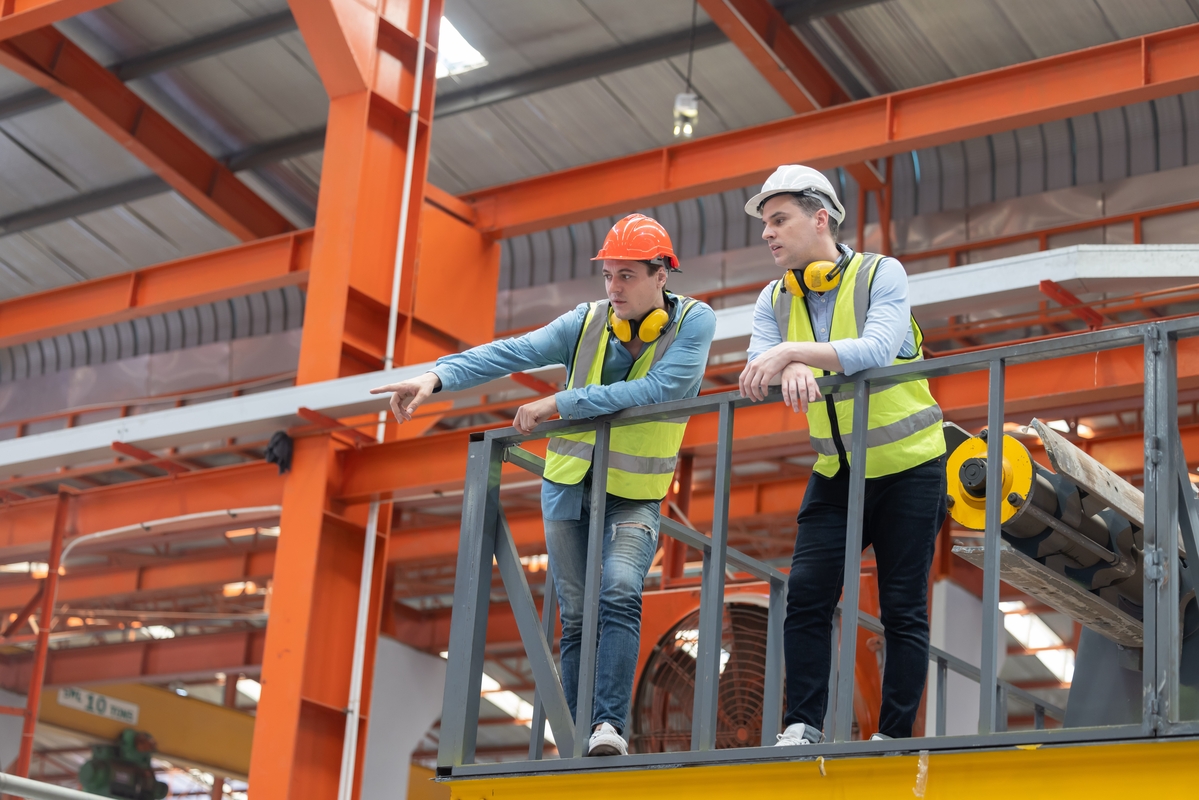
Many companies start their journey implementing sustainable manufacturing practices by turning to their compressed air professional for an air audit.
10. Comprehensive Air Audits
An air audit is the obvious place to start in improving industrial energy efficiency. It gives you a detailed description of how you’re operating, identifying system demand, peak times and, most importantly, opportunities for compressed air energy efficiency.
We’ve documented situations in which audits helped customers cut their energy use and save tens or even hundreds of thousands of dollars in our blog post, “How an Air Compressor Audit Can Reduce Operating Costs.”
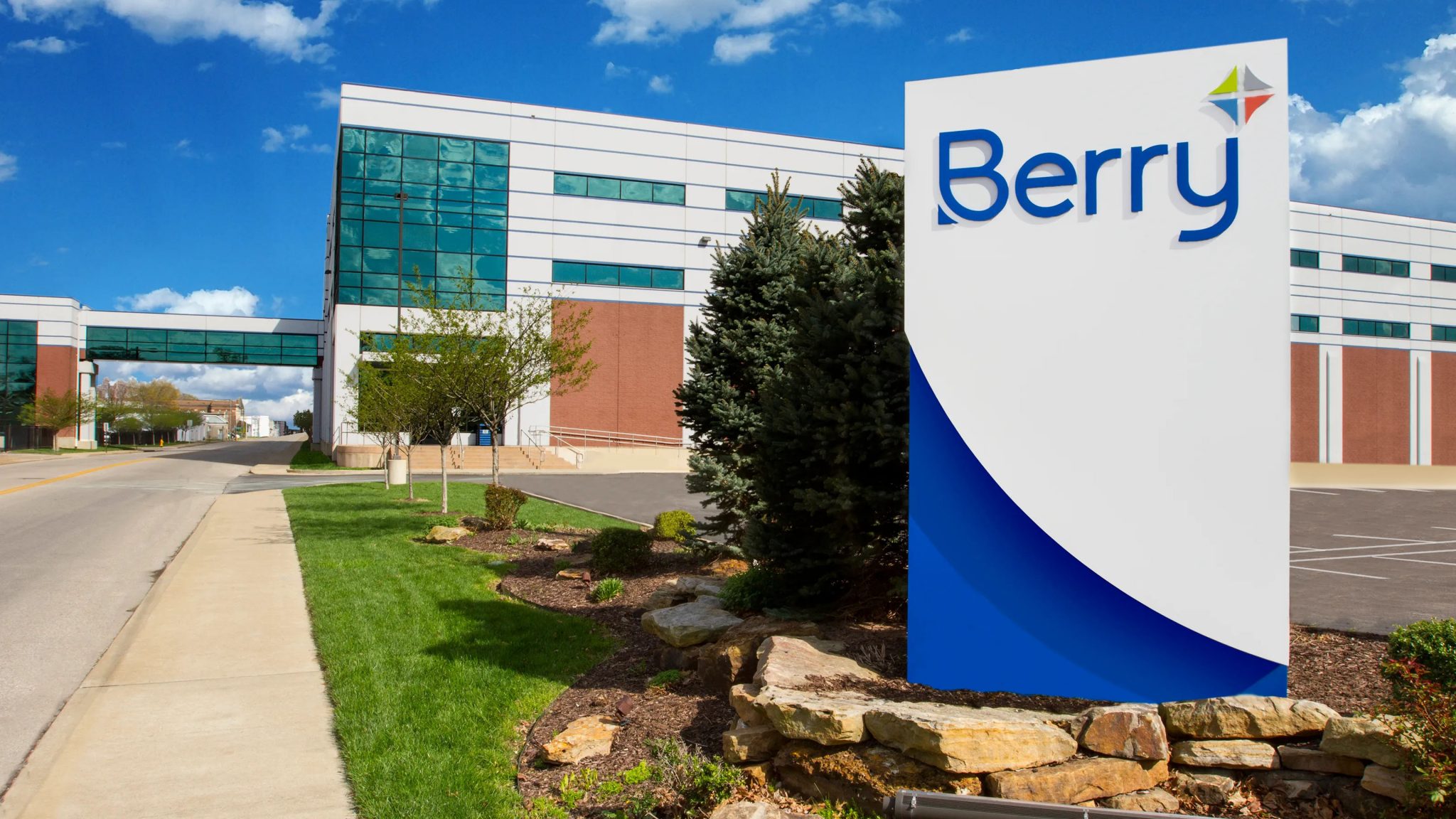
Industrial Air Centers (IAC), one of Kaishan's independent distributors, conducted an air audit and identified potential savings for Berry Global, convincing the company to do audits at many of its other plants. Learn how Berry Global dramatically improved its industrial energy efficiency by replacing several smaller units with one 300 HP Kaishan water-cooled rotary air compressor.
Most of the issues mentioned above, including using a two-stage compressor, switching to a three-compressor configuration, implementing a VSD air compressor and repairing leaks, would be addressed in an audit by an air compressor professional.
To help you get the kind of on-site analysis you need to achieve compressed air energy efficiency, Kaishan works with a nationwide network of independent distributors, who have the skills and the equipment needed to conduct a comprehensive audit of your compressed air system. They also have experienced technicians on staff who are skilled in analyzing your system and using leak-detection technology to identify leaks.
Key Takeaways
The top ten compressed air fixes that power sustainable manufacturing practices include:
1. Compressed air leak detection
2. Regular maintenance
3. Selecting the right compressor
4. Two-stage compressors
5. Accurate sizing
6. Variable-speed drive compressors
7. Upgrading your compressor
8. Compressed air system design
9. Avoiding diesel rentals
10. Comprehensive air audits
Let Us Help
Adopting sustainable manufacturing practices for your rotary screw air compressor is critical to the operation of your compressed air system and all the processes that rely on that system. If you need help improving your compressed air energy efficiency, get in touch with the experts at Kaishan. Contact us today.
Listen to the Podcast Version
Addressing Compressed Air Leaks and Maintenance Strategies
Welcome to the Big Dog podcast! It's finally here, our very first one. Thanks for joining us.That's right, Jason!
Right here, industrial air meets unfiltered, no-nonsense conversation. Powered by Kaishan USA, this podcast dives deep into the world of rotary screw compressed air systems—breaking down the tech, trends and the real challenges faced by end users who keep the industry moving.
And, even if we are AI-generated, Lisa, these straight-talking discussions are based on human-driven content—giving you the knowledge you need without the fluff.
Alright, so let's get started. Here's a big one facing the industry today: addressing leaks.
So, here's what most facilities don’t realize, Lisa—compressed air systems lose somewhere between 30 to 50% of their volume to leaks. In poorly maintained systems, that number can creep up to 80%. Let that sink in.
Wait, 80%? That’s massive. Why do you think something that glaring keeps getting overlooked?
Honestly, I think it’s one of those "out of sight, out of mind" things. Leaks are easy to ignore because you don’t always hear them. Only about 20% make that hissing sound everyone thinks of. The rest are stealth leaks—silent but deadly for your energy bill.
And those silent ones—are they harder to find, or can facilities just not be bothered?
They’re tougher to pinpoint, yeah. In fact, handheld detectors don’t cut it most of the time. You need ultrasonic leak detectors, which screen out all the background noise from other equipment. That’s the kind of tech most in-house teams just don’t have access to.
That makes sense. But even if you’ve got the right tools, leaks feel like only part of the problem. Isn’t maintenance—or the lack of it—the bigger issue here?
You’re absolutely right. A solid maintenance program is critical, and not just for leaks. The numbers show that proactive maintenance can slash costs by up to 70%. That’s huge, but—and this is the kicker—a lot of facilities don’t bother because they think their teams can "handle it."
Which, clearly, they can’t.
Not when it comes to advanced tech or consistent upkeep. Look, if you're serious about performance and efficiency, you’ve gotta team up with professionals. They can help you set up the right program, catch issues early, and keep your compressors running smoothly.
And what’s the alternative? Just burning through energy and money?
Pretty much. Facilities that let this slide are throwing money away while making excuses. It’s short-sighted and costly in the long run.
So, build a maintenance program, invest in leak detection tech, and stop wasting resources. Got it. But here’s a thought: if proactive maintenance is this effective, why do so many industries drag their feet?
Good question. I think part of it is just cultural inertia. A lot of industries operate on a "fix it when it’s broken" mentality. They don’t realize the savings they’re leaving on the table by not staying ahead of problems.
Which is wild, because the data’s all there, right?
Exactly. The evidence is overwhelming, but change takes time. It’s why we need more awareness around how much leaks and poor maintenance really cost.
Selecting the Optimal Compressor for Enhanced Efficiency
Speaking of efficiency, let’s talk about one of the biggest decisions facilities make—choosing the right compressor. Take two-stage rotary screw compressors, for instance. They can deliver up to 15 to 20% more air flow compared to single-stage ones of the same horsepower. That’s a lot of bang for your energy buck.Hold on—so just switching to a two-stage setup gives you that big of a boost in efficiency? What’s the catch?
The catch is upfront cost. Two-stage compressors are pricier out of the gate, but the payback can happen within a couple of years just from energy savings alone. Plus, they’re gentler on the equipment since the workload gets split between stages, which reduces wear and tear.
Makes sense. And I’m guessing that’s good for sustainability too—less waste at the end of its life, right?
Exactly. Split workloads mean cooler operating temperatures and longer component life. So not only are they efficient, they're also better long-term investments environmentally.
Okay, but let’s back up for a second. Even if someone’s sold on a two-stage compressor, isn't accurate sizing just as important? Like, what happens if you overdo it on the size?
Oversizing is a huge problem—no pun intended. People think getting a bigger compressor "just in case" gives them flexibility, but it’s the opposite. Oversized units end up cycling on and off too much.
Which burns more energy, right?
Exactly. Plus, all that cycling leads to overheating, oil carryover, and, frankly, the compressor wearing out faster. Oversizing is like buying sneakers three sizes too big—you’ll regret it in no time.
So how do you get it right? Is it just about matching horsepower to demand?
Demand, yes, but you’ve gotta consider peak loads and application specifics. And let’s not forget about mixed-use scenarios. That’s where an air audit can save your bacon, but we’ll get into that later. For now, the big takeaway is: think precision, not overkill.
Got it. Now, what about variable-speed drive compressors? Those seem like an easy solution for adapting to fluctuating demand.
They can be, but only in the right conditions. VSDs adjust motor speeds to match demand, saving energy by avoiding full-speed operations when they’re not needed. Facilities with variable loads see the biggest benefits.
But there’s a downside, isn’t there?
There is. At low usage, VSDs can run too cold and build up moisture, which eventually damages the internals. And at high usage levels, they’re actually less efficient than fixed-speed models because of drive losses.
So they’re not the one-size-fits-all solution some people think?
Exactly. They’re great tools, but only if they're matched to the right situation. Otherwise, you’re looking at diminishing returns—or worse, damaging your investment.
Implementing an Effective Compressed Air Design System
Now that we’ve talked about choosing the right compressors—whether it’s two-stage, fixed-speed, or variable-speed—and ensuring they’re sized correctly, let’s shift gears to system setup. If reliability is your goal, your configuration matters. Here’s a starting point: a three-compressor setup—base, trim, and backup. No shortcuts.Let me guess, each one plays a specific role, right?
Exactly. The base load compressor carries your minimum demand. Trim units handle the spikes, and a backup stands by for emergencies. This setup doesn’t just keep things running; it slashes downtime and makes maintenance way smoother. You’re basically building in resilience from the ground up.
But what about the costs? I mean, adding extra compressors—it’s gotta be an investment, right?
It is, but the numbers make sense long-term. Remember, electricity eats up 76% of a compressor’s total cost of ownership. It’s not the unit itself that’s pricey—it’s the daily grind of keeping it powered. Having a smart configuration minimizes inefficiencies, which means real savings.
Okay, but let’s say someone’s stuck with old equipment that’s guzzling energy. How much are we talking in terms of savings if they upgrade?
Depends on how outdated the system is, but upgrades often pay for themselves through energy efficiency alone. Think about it—just swapping older compressors for modern ones can reduce electricity use by tens of thousands annually. Plus, manufacturers are constantly improving their tech. Sitting on aging equipment is like burning cash.
Yeah, and it’s not great for sustainability either, is it?
Not even close. Old compressors are less efficient and more prone to breakdowns, which increases waste. Plus, facilities without reliable backups end up renting diesel units, and let me tell you—diesels are environmental nightmares.
Right, because they’re not just pricey—they’re dirty, too. But why would anyone still rely on them if we’re this far along in trying to go green?
Because planning ahead takes effort. Backup compressors eliminate the need for diesels, but that requires a deliberate investment. A lot of plants don’t think about it until it’s too late—then they’re stuck scraping for quick fixes like diesel rentals, which cost way more to operate and maintain.
And the air quality from diesels—it’s worse too, right?
Way worse. Most don’t include aftercoolers, so they send wet air into the system, which puts extra strain on your dryers. It’s messy, inefficient, and anything but sustainable.
Alright, so we’re back to the same message—get your system planned right upfront so you’re not scrambling later.
Exactly. A well-designed system with a backup plan costs less in the long run, keeps you efficient, and makes life easier for everyone on the floor. It’s a win on all fronts.
And if you’re not sure where to start, I’m betting an air audit can fill in the gaps?
Absolutely. Professionals can pinpoint inefficiencies and find opportunities for savings you’d never notice on your own. It’s like getting a roadmap to a better, more sustainable operation. Which, honestly, is what this all comes down to—being proactive and intentional. Don’t wait for the next failure to make changes. Plan smart, upgrade wisely, and keep your systems humming. Exactly. And on that note, we’re done for today. Great conversation as always. Yeah, this was a good one. Alright, everyone, take care and see you next time!
Random stat or
customer quote
textXXtext
text

